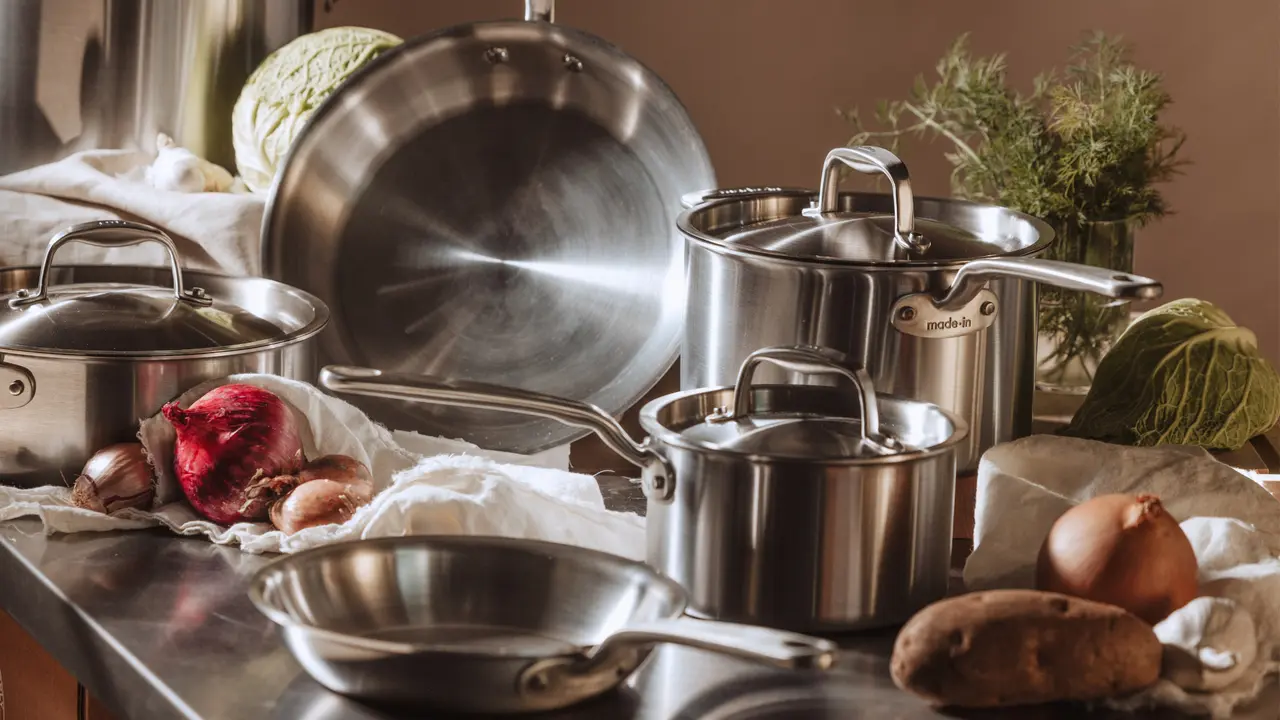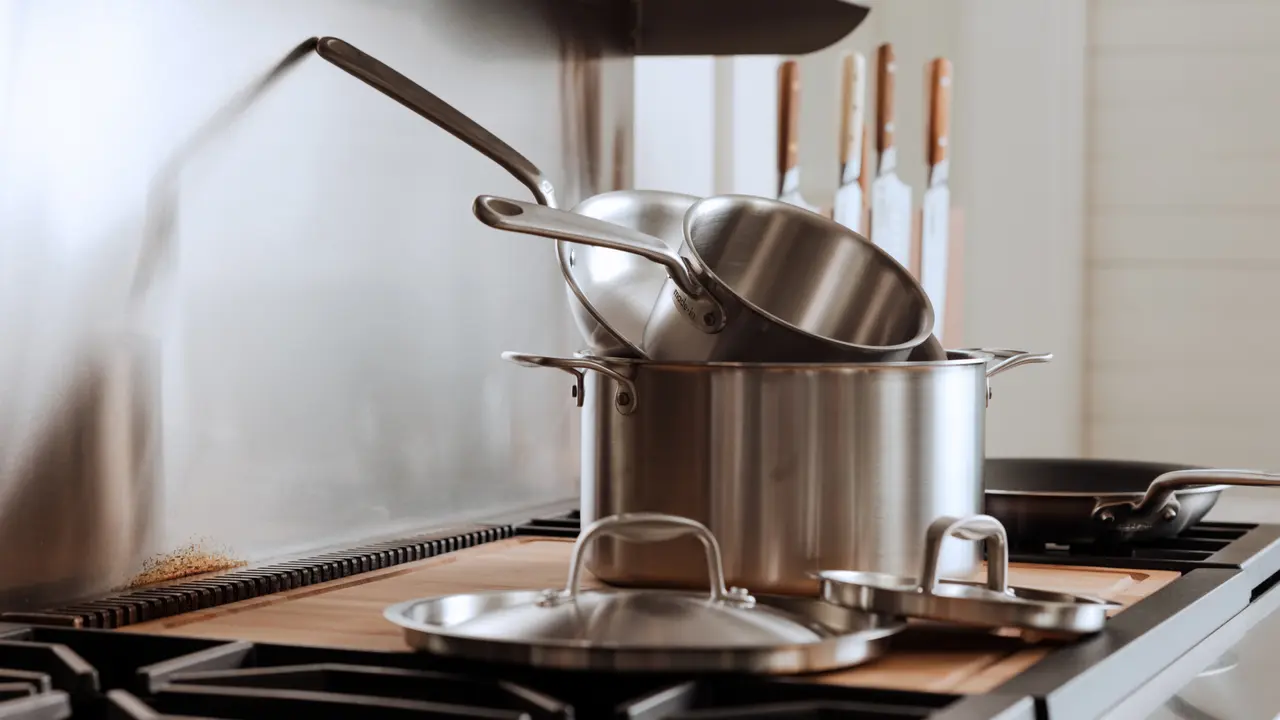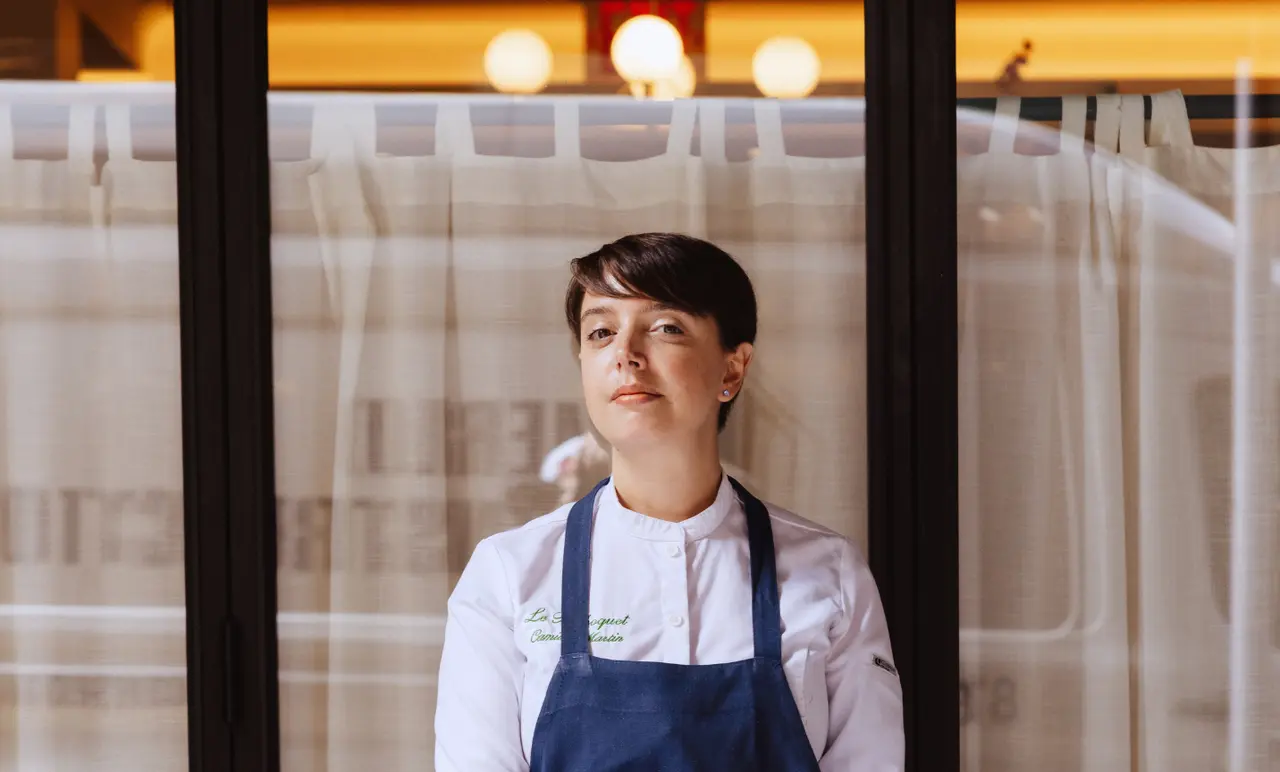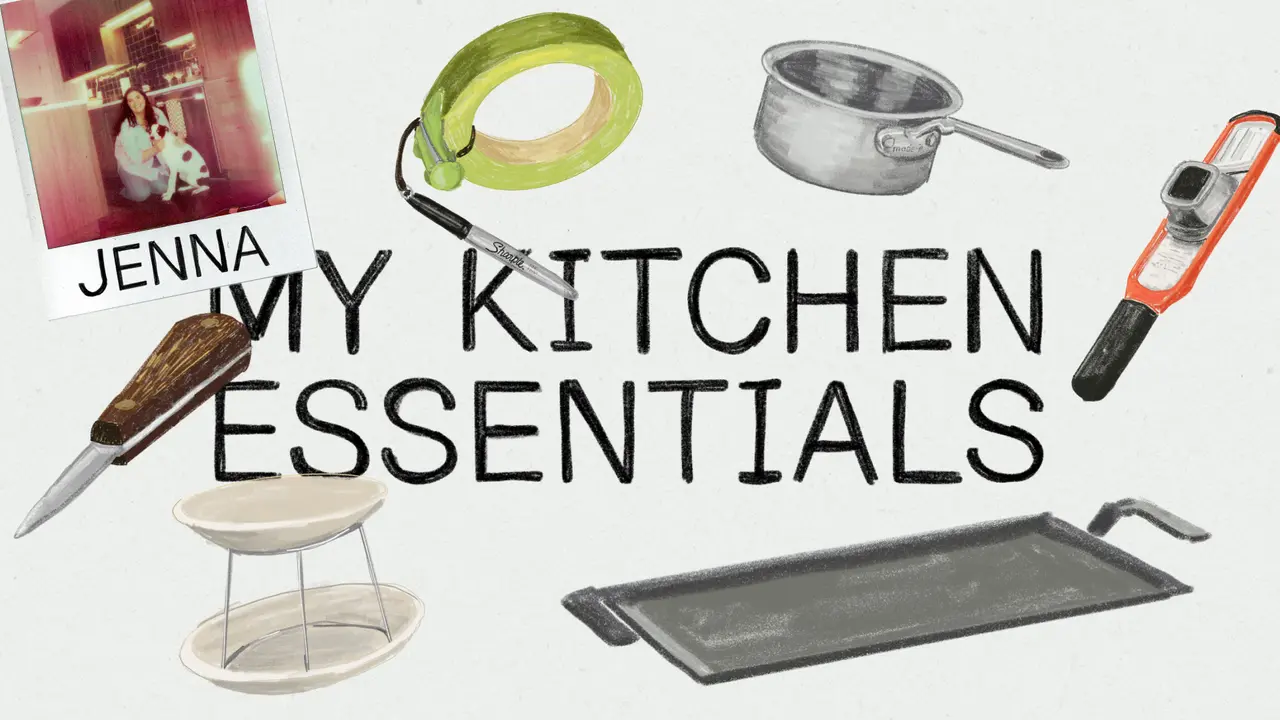Each month we’re breaking down the professional culinary techniques that make our recipes—like the Skillet Chicken Pot Pie—so technically perfect. That way, you’re able to confidently recreate (and riff on) them at home.
Earlier this month, the Made In Kitchen team posed themselves a question: Can the perfect homemade pot pie be made on a weeknight? The truth is, frozen chicken pot pies are pretty good, give or take some blandness and a soggy bottom. Still, despite those faults, a recipe would have to really stand out to be worth giving up that convenience.
You see where this is going.
With help from a key grocery store shortcut, Culinary Creative Director Rhoda Boone’s recipe focuses on crafting the Platonic ideal of chicken pot pie fillings. Following professional best practices that most home cooks never learn, her version is velvety smooth and rich, but not heavy, with a burnished crust that’s effortlessly flaky (and probably better than most homemade doughs, if we’re being totally honest).
The process is easy, but getting it exactly right does require some attention to detail. Below, we’re covering the professional culinary practices you can use to perfect Rhoda’s (or any other) pot pie.
The Crust
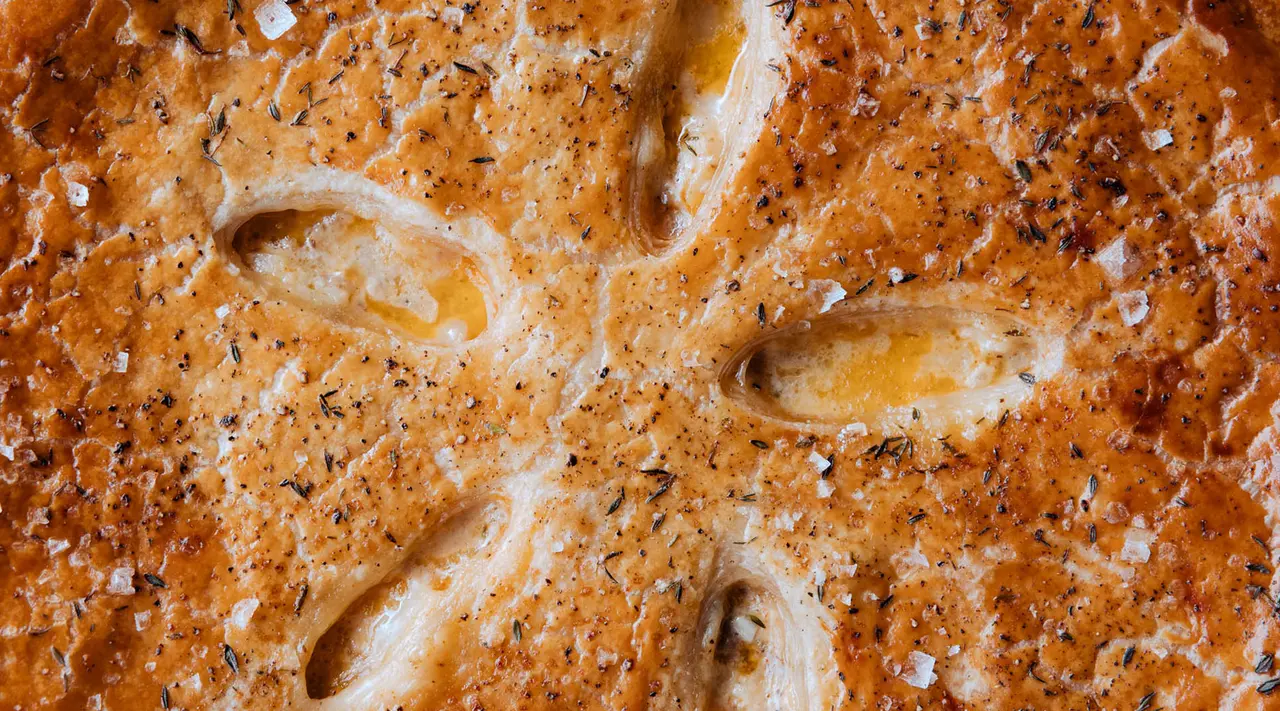
The crust is never the star of a pot pie, but this one—a light and flaky store bought all-butter puff pastry that’s brushed with an egg wash and dusted with salt, cracked pepper, and fresh thyme—comes close. And the best thing is, all it requires from you is less effort—just head to the nearest frozen aisle.
Use (All-Butter) Frozen Puff Pastry
Weeknights are no time for a project, so Rhoda swaps homemade pie dough for frozen puff pastry. It’s worth seeking out an all-butter frozen puff pastry dough, as these result in more rise, flake, and flavor. Other brands (see: “depperidge darm") rely on shortening as the fat. This reduces some of the rise and all the buttery flavor, but it still beats making your own—and is a huge come up for vegans everywhere.
Skip the Bottom Crust
Haters will disagree, but double-crusted pot pies are simply not worth it—they have to be baked twice, they dirty additional dishes, and 99% of the time they still come out with a soggy bottom. With no bottom crust to speak of, Rhoda’s Skillet Pot Pie remains a tidy, shatteringly crispy, one-pan meal.
Assembly and Baking
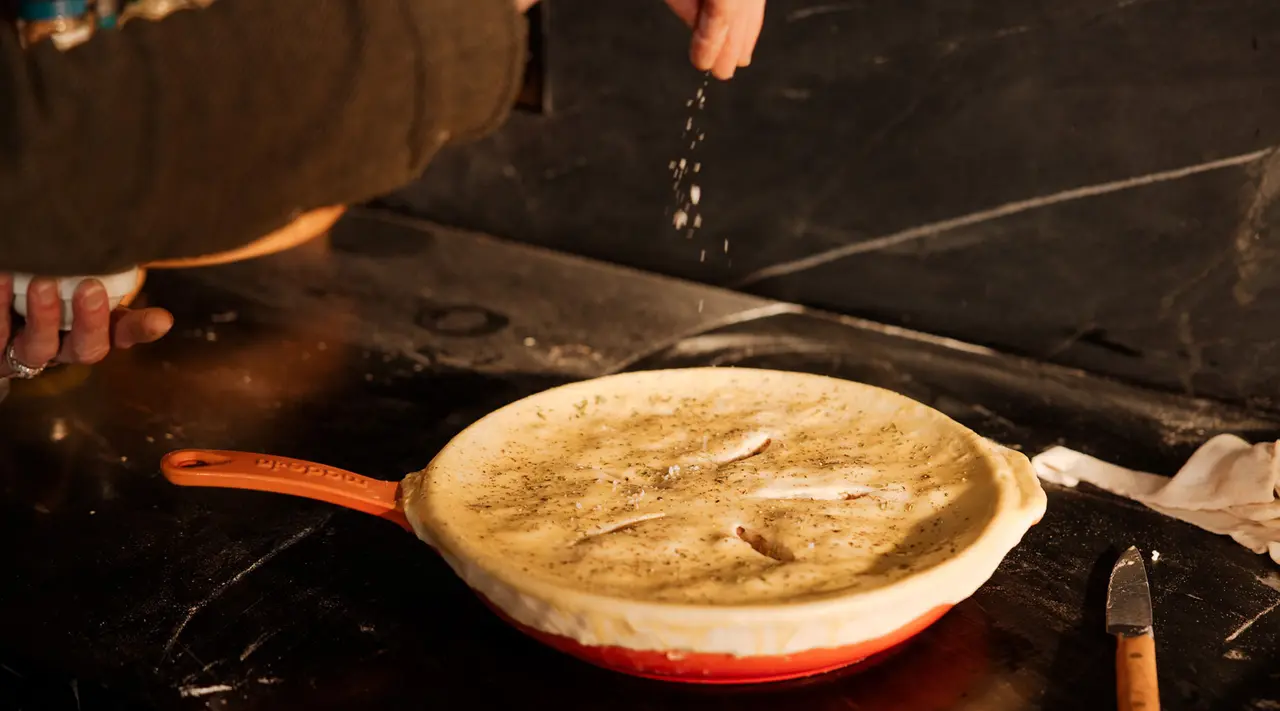
After the filling is cooked and the crust rolled out, brush the outside rim of the Skillet with the egg wash. This helps the pastry to adhere firmly and forms a seal that prevents filling from escaping. (You should still bake the pot pie on a rimmed Sheet Tray, just in case any filling does bubble over—Made In is not liable for any burnt oven bottoms.)
As a finishing touch and for a more golden crust, brush the egg wash across the surface of the pie and then sprinkle lightly with crushed fresh thyme, salt, cracked black pepper, and whatever seasonings you use in the filling.
The Filling
According to French culinary tradition, there are five “mother” sauces from which all others are descended: Espagnole, hollandaise, tomato, béchamel, and velouté. These are among the first lessons young cooks learn, whether in culinary school or on the line. How to make them properly (i.e. no splitting, no skin, no lumps) comes immediately after.
Home cooks tend not to be overly fussy about sauces. For most, the real “meat” of a meal is, well, the meat. Sauce becomes an addendum—and thus the technical detail that distinguishes the home cook from the trained one. Below, you’ll learn how to make one like a professional.
Start With a Roux
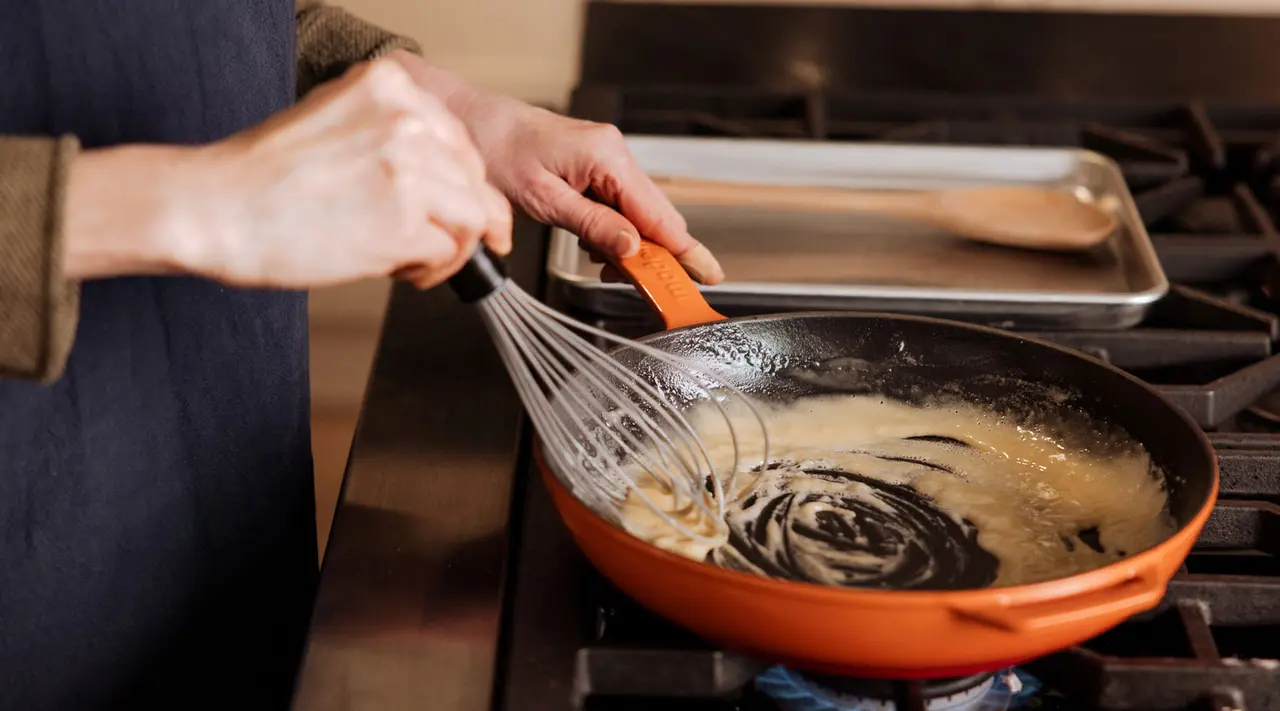
In her recipe, Rhoda combines classic elements of béchamel and velouté, borrowing a white roux base from the former and chicken broth from the latter. Heavy cream, which doesn’t figure in the traditional recipes for either, is a welcome improvisation that ensures a filling that’s creamy, full-bodied, and light in color—just like Marie Callendar intended.
Roux, pronounced “roo,” is a foundational French method for thickening sauces, commonly used in dishes like gumbo, mac and cheese, and—you guessed it—chicken pot pie. It’s the first step in building both béchamel and velouté, and is the difference between a runny sauce and one cooked to the perfect nappe consistency. Roux is a simple 1:1 ratio of flour to fat, which is then cooked on the stove until the desired color is achieved. Liquids are then added to form a sauce.
Opinions vary, but most people categorize roux as either white, blond, or brown (sometimes further sub-categorized as medium-brown and dark-brown). The color corresponds to the amount of flavor and the length of cooking time, with white taking just a few minutes to cook out the raw flour (as in the case of pot pie), and brown taking around 45 minutes (as in the case of gumbo). As the roux darkens, its thickening power is diminished.
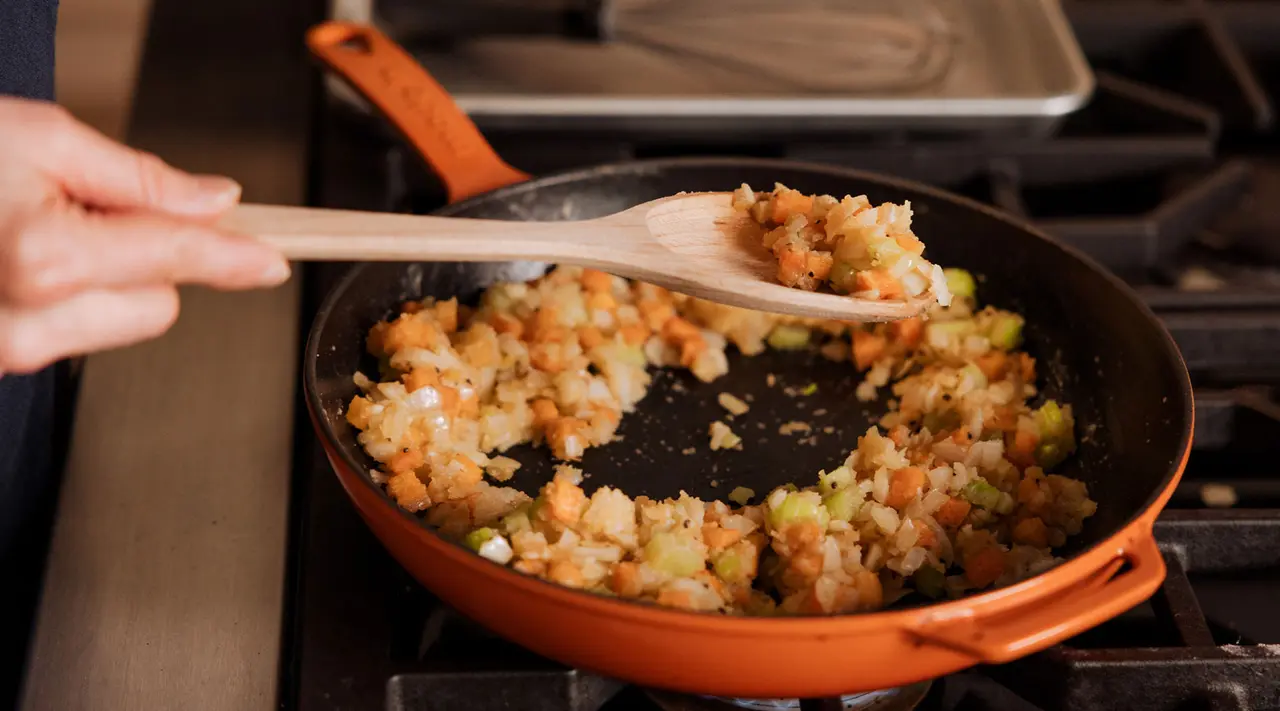
White roux is primarily used for thickening rather than for its flavor potential, so Rhoda takes it a step further and sautés the vegetables in the roux to add some depth. A staunch pea denier, Rhoda prefers to round out her pot pie with carrots, celery, onion, and potato—but if you want peas, she won’t know. Swap out the carrots, celery, and potato for 3 cups of whatever vegetables you prefer—even the frozen vegetable medley from the supermarket will do. But please keep the onion and garlic for their flavor-building power.
Temperature Is Everything
Emulsions—stable and homogenous mixtures of ingredients that typically don’t commingle, like fat and water—are incredibly fragile, seemingly ready to separate back into distinct layers at the slightest provocation. Drastic changes in temperature are a common culprit, so it’s important to cook over a steady heat and ensure all your liquids are at room temperature. That way, when they’re added to the pan, they won’t cause a sudden drop in temperature that shocks the emulsion into breaking.
Add Liquids Slowly
Again, emulsions are fragile. Lipids like oil and butter are nonpolar and hydrophobic, making it difficult for them to mix with water or broth. If you’ve ever gotten butter on your hands, you’ll know it’s incredibly difficult to rinse off with water alone—that’s because the butter isn’t really intermingling with the water, so it can’t be washed away. This concept is also exemplified by vinaigrettes that separate into two distinct layers.
A proper emulsion forces these unwilling participants to coexist by evenly dispersing one throughout the other. In this case, you’re dispersing the roux throughout the broth. Adding the broth gradually gives you more control and allows you to slowly build up a strong emulsion wherein the fat particles are evenly suspended throughout the broth, much like the diced vegetables are suspended throughout the filling.
…But Whisk Quickly (and Constantly)
For the best texture and the strongest emulsion, you want to break down the fat into the smallest particles possible—this makes it harder for both water and fat to separate. Rapid whisking is the easiest way to get the two to play nice, and a little elbow grease will result in a finer dispersion of fat and a velvety, almost aerated filling.
Warm Your Plates
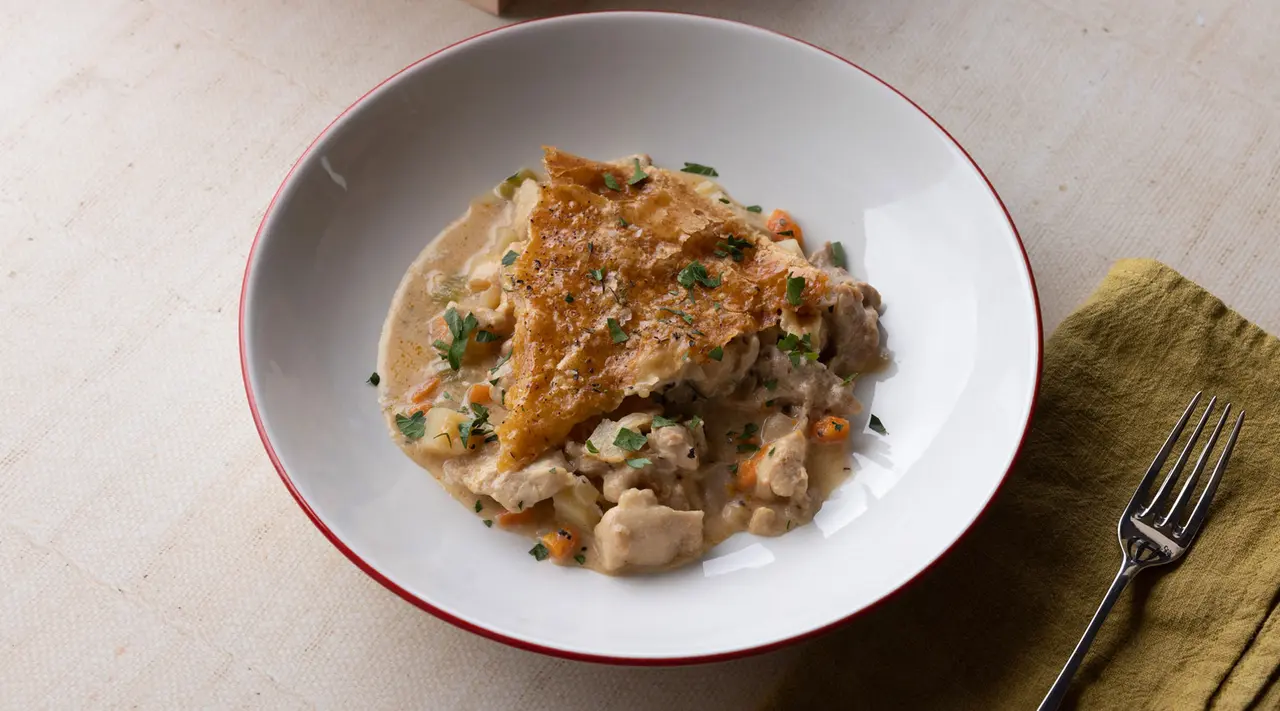
Of all the tips, this is the one home cooks are least familiar with. Restaurants will often heat their Plateware to reduce the shock of the temperature change when the hot pot pie meets a room temperature plate. It’s not strictly necessary, but beyond preserving the integrity of your pot pie, it’s a nice touch and will also keep your food warmer for longer. Just be sure the Plates or Entrée Bowls you’re using are oven-safe (Made In’s Plateware is oven-safe to 580F). To warm plates, heat them for 15 minutes in an oven set to 200F, or its lowest setting. Be careful handling them as they will be warm.
Troubleshooting: My Chicken Pot Pie Filling Is Split
First, let’s align on what a non-split sauce is like: “A good white sauce is perfectly smooth, with noticeable body and no hint of graininess. It is thick enough to coat the back of a spoon yet still easy to pour from a ladle,” says the Culinary Institute of America. Conversely, a split filling will have a distinctly oily look, may seem to be curdled, and will appear to have separated.
This can happen for any number of reasons, including (but not limited to) improper heat levels, overcooking, or not enough thickener. If you follow the above tips, you’re more than likely to find success. If you still wind up with a split filling, try adding a splash of cream over medium-low heat, whisking continuously. Cream is itself an emulsification, and can help get you back on the right track. And as Harold McGee outlines in his seminal text On Food and Cooking (a must-read for any food science nerd!), heavy cream contains “proteins and emulsifying molecules that can help stabilize other, more fragile emulsions” (via Tasting Table).
Ready to Try it Yourself?
That about covers it. Now that you know the professional techniques and science behind crafting the perfect pot pies, emulsions, and French sauces, you’re ready to put your newfound knowledge to the test—whether with this recipe or one of your own.





